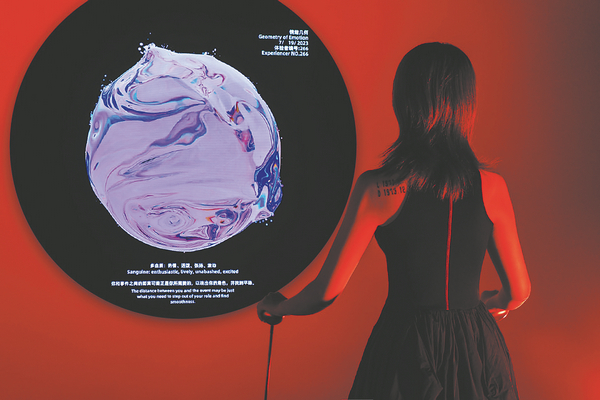

Chen Yan, a member of the exhibition's organization committee and director of the CAA AI Center, says that they set up an official website for submissions about a year ago and by October, they had received 12,000 entries. "As a result, we have also been able to build a database of a considerable size of digital art works and creators, which is important to the national digital art scene," he says.
Chen adds that they invited several digital artists of repute to show at the exhibition, and that the work is divided into categories including computer generated images, digital videos, interactive design, artificial intelligence, augmented reality, virtual reality and mixed reality.
"Every visitor will be able to see how digital technology has changed our lives and how it will shape our future," he says.
The exhibition takes people to the country's past, as well as to the forefront of space exploration, creating a link between the past, present and future at a single venue.
For example, a mixed-reality piece presented by the China Media Group is an immersive experience allowing visitors to take a virtual journey via an online platform called the CMG Meta Museum, where it is possible to tour reconstructions of 10 archaeological sites key to China's over 5,000 years of civilization in avatar form.